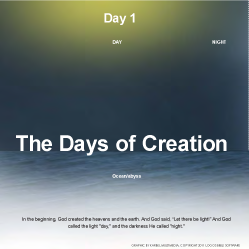7:1–12 After finishing the temple (6:38; 7:1; 9:10), Solomon turns his attention to the palace compound. This compound includes the House of the Forest of Lebanon, |
7:1 Solomon built his house Solomon likely started this building project after finishing the temple (6:38; 9:10).
his house Refers to the palace compound, including Solomon’s personal residence (v. 8).
7:2 the House of the Forest of Lebanon The name was probably inspired by the building’s use of cedar.
7:4 three rows of specially designed windows Similar to the temple’s windows (6:4).
7:5 doorways and the doorframes had four-sided casings Similar to the temple doors and windows (6:31, 33).
7:6 fifty cubits in its length A cubit is about 18 inches. Fifty cubits is thus about 75 feet.
an overhang The exact meaning of the Hebrew word used here, av, is unclear; it also appears in Ezek 41:25, where it likewise describes something wooden.
7:7 the throne Solomon’s gold-plated, ivory throne is described in 1 Kgs 10:18–20.
is described in 1 Kgs 10:18–20.
floor to the rafters While the Hebrew text reads “from floor to floor,” the Syriac and Vulgate versions read “from floor to rafters.”
7:8 in the next courtyard A comparison with the Syrian bit hilani suggests that this court was in the back of the main building (see note on vv. 1–12).
like this work It is unclear what building or hall Solomon’s residence is being compared to.
for the daughter of Pharaoh Identifies her privileged position among Solomon’s wives. This is the second of five references to the marriage (3:1; 9:16, 24; 11:1).
7:10 precious stones, and large This verse may provide more details about the stones described in v. 9; alternatively, it may describe a different course of stone.
7:12 the courtyard of the inner house of Refers to courtyard described in 6:36.
the porch of The Hebrew word used here, ulam, describes a porch or entrance hall. It is unclear whether the author is referring to the house of Yahweh (the temple) or Solomon’s residence.
7:13–51 Descriptions of Hiram’s bronze work are arranged according to size—from large items like pillars to small items like utensils (vv. 13–40). A summary of Hiram’s work and a few details about his method follow (vv. 41–47). The most precious utensils used in the temple are attributed to Solomon (vv. 48–50), although the text refers to Hiram (or Huram) as possessing wisdom and skill in bronze work (v. 14). The temple was considered complete once the vessels consecrated by David were transported into the temple treasury (v. 51). |
7:13 Hiram from Tyre This bronze-worker is not to be confused with King Hiram from 5:1.
7:14 He was filled with wisdom and with ability and with the knowledge Bezalel, whom Yahweh filled with the Spirit of God to carry out the work of the tabernacle, also possessed these qualities (Exod 31:2–6; 35:30–31).
bronze The Hebrew word used here, nechosheth, means “copper ore,” but it typically referred to the bronze alloy used throughout the ancient Near East by the second millennium bc.
he did all of his work He may work under Solomon’s supervision.
7:15 eighteen cubits A cubit is about 18 inches. 18 cubits is about 27 feet.
7:18 pomegranates In the ancient Near East, pomegranates were a symbol of abundance.
were a symbol of abundance.
7:19 the porch See 1 Kings 6:3 and note; vv. 6–8.
7:21 Jakin The Hebrew word used here, yakhin, means “he will establish.” The names of these two pillars likely represent catchwords of sentences that were inscribed on the pillars. Mesopotamian doors and gates often bore names asking the gods for protection and blessing.
Boaz The Hebrew word used here, boaz, means “in strength.” See previous note.
7:23 ten cubits in diameter This makes the diameter of the sea 15 feet wide and the height 7.5 feet tall. The function of the sea is uncertain.
7:24 were cast when he cast the metal The sea and the decorations surrounding it were a single piece of bronze.
gourds Gourds were also carved on the temple walls (6:18).
7:25 oxen Used as work animals throughout the ancient world, oxen (or bulls) symbolized strength. Ahaz later eliminated the cast oxen and had the sea set on stone (2 Kgs 16:17).
later eliminated the cast oxen and had the sea set on stone (2 Kgs 16:17).
7:26 a handbreadth Refers to the width of four fingers (roughly 3 inches).
two thousand baths A bath is about 22 liters, meaning the sea could hold 44,000 liters (12,000 gallons). The parallel account in 1–2 Chronicles puts the volume of the sea even higher—3,000 baths (2 Chr 4:5).
7:27 ten stands of bronze Each stand was paired with one of 10 basins (1 Kings 7:38–39).
7:37 with the same measurement and shape The Hebrew words used here, middah (meaning “measure”) and qetsev (meaning “form”), also are used to describe the two identical cherubim (6:25).
7:38 forty baths A bath is approximately 22 liters, meaning each basin holds about 880 liters.
basin The Hebrew word kiyyor comes from the Akkadian word kiuru, meaning “cauldron.”
7:40 the basins and the shovels and the bowls for drinking wine Listed as utensils in the tabernacle (Exod 27:3; 38:3). The pots and shovels are used to remove ashes from the altar. The basins are used to collect sacrificial blood for splashing against the altar (Exod 24:6). The basins also might have been used for libation rituals (Amos 6:6; Zech 9:15).
all of the work that he was to do Concluding statements like this also appear in the narrative of the temple building (1 Kgs 6:9, 14).
7:41 the two pillars See v. 15.
the bowls of the capitals which were atop the two See vv. 16–22.
7:43 ten stands See vv. 27–37.
7:45 polished bronze Another detail about the utensils mentioned in v. 40. The Hebrew word used here, marat, refers to making bald, bare, or smooth (Ezek 29:18; Ezra 9:3; Neh 13:25; compare Isa 18:2). This description likely refers to smoothing away imperfection or polishing (Ezek 21:10).
7:46 the plain of The Hebrew word used here, kikkar (meaning “district,” or “circle”), can refer to either side of the Jordan. Succoth and Zarethan are on the east bank.
and Zarethan are on the east bank.
the casting mold set in the ground The Hebrew phrase used here, ma'aveh ha'adamah, is an idiom meaning “clay.” It is literally translated as “thickness (ma'aveh) of the ground (ha'adamah).”
7:47 their very great abundance The Hebrew phrase used here, merav me'od me'od, literally translates as “very, very many.”
7:48 Solomon also made all of the vessels Solomon commissioned all of these objects, but probably did not craft them himself.
the golden altar May have been used to burn incense (see 1 Kings 6:20).
golden table on which was the bread of the presence The dimensions and construction of this table may be similar to the golden table built for the same function in the tabernacle (Exod 25:23–28).
the bread of the presence Leviticus 24:5–9 describes the ritual involving the bread of the Presence. David acquires this bread at Nob (1 Sam 21:2–7).
David acquires this bread at Nob (1 Sam 21:2–7).
7:49 lampstands of beaten gold The 10 lampstands described here contrast the single lampstand used to light the tabernacle (Exod 25:31–37).
used to light the tabernacle (Exod 25:31–37).
flower-shaped ornaments The tabernacle lampstand also displays a floral motif (Exod 25:31, 33; Num 8:4).
lamps Refers to oil lamps. Archaeological remains show that lamps of varying styles and sizes were used at this time.
pair of tongs A tool associated with lamps, possibly used for adjusting the wick.
7:50 The cups The Hebrew word used here, saph, refers to a container to hold liquid, such as blood (Exod 12:22).
bowls for the incense The Hebrew word used here, kaph, often refers to the palm of the hand. Here, it likely describes spoon-shaped utensils used for incense (Exod 25:29; 37:16; Num 4:7; 7:14).
firepans Associated with the incense altar (Lev 16:12), not the sacrificial altar (Exod 27:1–3) or lampstands (Exod 25:38).
altar (Lev 16:12), not the sacrificial altar (Exod 27:1–3) or lampstands (Exod 25:38).
facades The Hebrew word used here, poth, can refer to hinges, an entrance, or keys to the door.
the most holy place See 1 Kgs 6:31–32.
the doors of the main hall of the temple See 6:33–35.
7:51 This final summary statement concludes the narrative of the temple building and the construction of the temple furnishings. The Hebrew word kalah (meaning “to complete”) is used to mark the completion of various stages of the project (6:9, 14, 38; 7:1, 40). It echoes God’s completion of the phases of creation (Gen 1:1–2:4). Similarly, this summary statement uses the Hebrew word shalem (meaning “to complete” or “to be whole”), most likely as a play on words with Solomon’s name in Hebrew, shelomoh. |
Event | Date |
Solomon becomes king | 971 bc |
Solomon begins construction on the temple | 967 bc |
Solomon finishes the temple | 960 bc |
his father David Refers to the spoil and tribute David collected from his enemies and vassals, which he then dedicated to Yahweh (2 Sam 8:9–12).

|
About Faithlife Study BibleFaithlife Study Bible (FSB) is your guide to the ancient world of the Old and New Testaments, with study notes and articles that draw from a wide range of academic research. FSB helps you learn how to think about interpretation methods and issues so that you can gain a deeper understanding of the text. |
| Copyright |
Copyright 2012 Logos Bible Software. |
| Support Info | fsb |
 Loading…
Loading…




